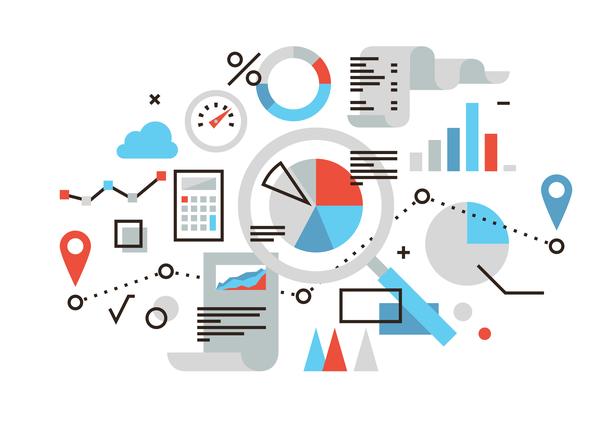BI/DW: What is Business Intelligence and Data Warehousing?
There has been some confusion in the industry concerning the differences between business intelligence tools (BI) and data warehouses (DW). Some people conflate them into a single term (Business Intelligence / Data Warehouse) – and consider them fundamentally the same. Others think of them as separate software categories. Power BI Developers can embed Power BI content, develop Power BI visuals, and automate Power BI processes.
Custom Software Development is designing, constructing, deploying, and retaining software programs for specific user businesses, capabilities, or organizations.


What are Business Intelligence and Analytics?
Business intelligence (BI) analyzes data and extracts insights that help companies make decisions. An effective BI process enables analysts and data scientists to discover meaningful hypotheses and answer those using available data.
For example, if management asks, “How can we improve the conversion rate of our site?” BI can spot the viable reasons for low conversion charges. The cause could be a lack of interaction with the website content. Within the BI system, analysts can show whether engagement is blocking conversions and what content is the root cause.
The tools and technologies enable BI to take data stored in files, databases, data warehouses, and even vast data lakes and query that data (usually in SQL format). I will do it. Use query results to create reports, dashboards, and visualizations, and extract insights from that data. Insights are used by executives, middle managers, and employees to make data-driven decisions in their day-to-day business.
What are Business Intelligence and Analytics?
Business intelligence (BI) analyzes data and extracts insights that help companies make decisions. An effective BI process enables analysts and data scientists to discover meaningful hypotheses and answer those using available data.
For example, if management asks, “How can we improve the conversion rate of our site?” BI can spot the viable reasons for low conversion charges. The cause could be a lack of interaction with the website content. Within the BI system, analysts can show whether engagement is blocking conversions and what content is the root cause.
The tools and technologies enable BI to take data stored in files, databases, data warehouses, and even vast data lakes and query that data (usually in SQL format). I will do it. Use query results to create reports, dashboards, and visualizations, and extract insights from that data. Insights are used by executives, middle managers, and employees to make data-driven decisions in their day-to-day business.
What is DATA Warehouse?
A data warehouse is a data management system that stores large amounts of data for later processing and analysis. You can think of this as a large warehouse where trucks (that is, source data) unload data. This data is sorted into well-organized rows of shelves to make it easier to find what you’re looking for later. Business intelligence helps enable structured, data-driven decision-making across the enterprise.
Data warehouses maintain rigorous accuracy and consistency using extract, transform, and load (ETL). This process loads data in batches and populates the desired structure of the data warehouse.
The data warehouse provides a long-term view of data and focuses on data aggregation on transaction volume. The data warehouse component includes an online analytical processing (OLAP) engine that enables multidimensional querying of historical data.
You can integrate Data warehouse applications with BI tools such as Tableau, Sisense, Chartio, and Looker. This allows analysts to use BI tools to explore the data warehouse data, form hypotheses, and act on them. Analysts can also use data from BI tools and data warehouses to build dashboards and recurring reports and track key metrics.
How Does the Data Warehouse Work?
A data warehouse is a reasonably complex system, but it involves three significant aspects: storage, software, and effort. The investments required in all three should be considered when deciding to implement a data warehouse.
More and more companies are now recommending using a method called ELT (Extract, Load, and Transform) instead of ETL. Companies often extract data from their source data, load it into a data lake, and then use a data warehouse to transform the data. ETL and ELT are supported by his software, such as Panoply.io and Stitch. For more information, check out our in-depth resources on ETL, ELT, and even ETLT.
Of course, data warehouses don’t work in isolation. A data warehouse is more than just a system; labor is an integral part of data warehouse operations. This “complete…architecture” requires an expert to set up and manage.
All this work aims to centralize and organize the data to be more easily understood. That is where enterprise intelligence tools come into play. They sit on your data warehouse as a layer that helps you query, analyze, and visualize data.
Comparing Data Warehousing and Business Intelligence
BI/DW cannot function without each other, but some significant differences exist.
What is the End Goal?
BI is primarily focused on generating business insights. Determine quantitative factors relevant to your business, including product positioning and pricing, profitability, revenue, sales performance, and forecasts. On the other hand, DW is responsible for storing the organization’s data (from multiple sources) in one central location.
In other words, BI systems use DW to process and analyze data, and DW serves as the data foundation for BI tools.
Mobile App Development is creating software applications that run on mobile devices, and mobile applications typically use network connectivity to operate remote computing resources. Therefore, the mobile development process includes creating installable software packages (code, binaries, assets, etc.), implementing backend services such as data access using APIs, and testing the application on target devices.
Business Intelligence Service solutions help organizations monitor risk compliance and make data-driven decisions.

Accessing data through cloud-based and on-premises sources like SharePoint, Excel, and Azure, Power BI tool obtains and analyses data through Complex Analysis, Predictive analysis, and Data mining.
We all know how tedious forms can be, whether you are filling one or getting one filled. To reduce human error and collect data in a standard format, ensuring you collect all mandatory details, web-based ...
Experiencing ineffective collaboration and reduce business productivity? Through SharePoint consulting services, find out how SharePoint platform can transform your business ...






